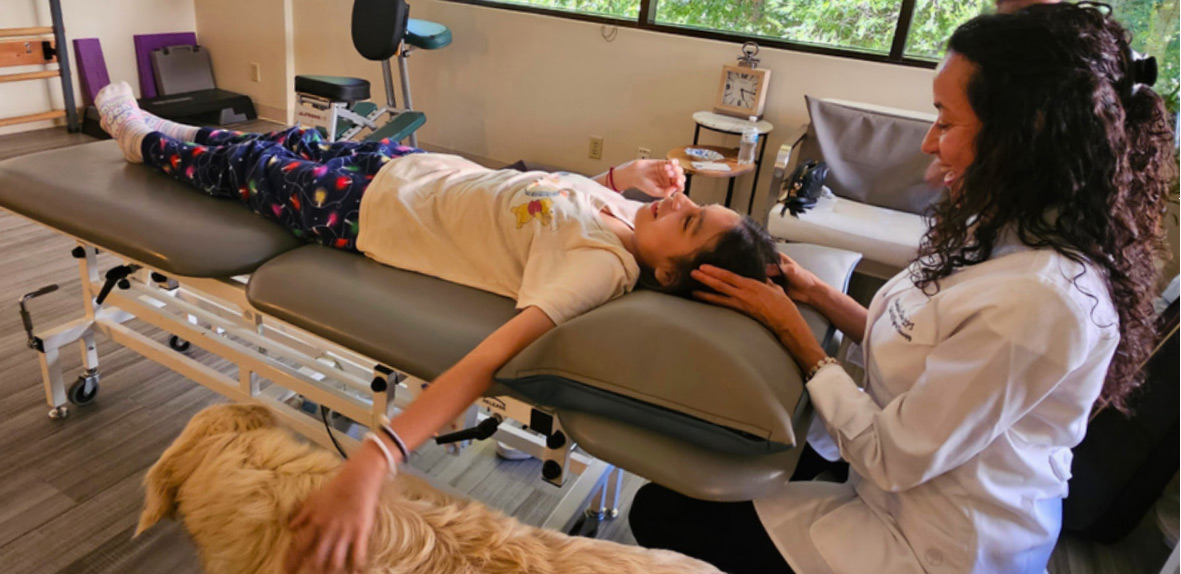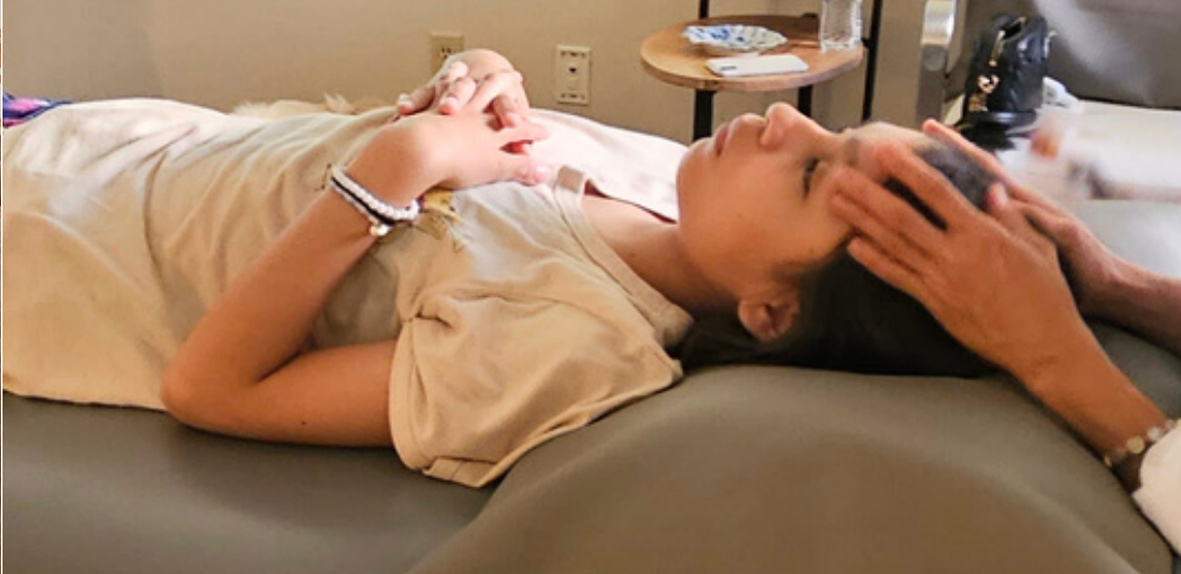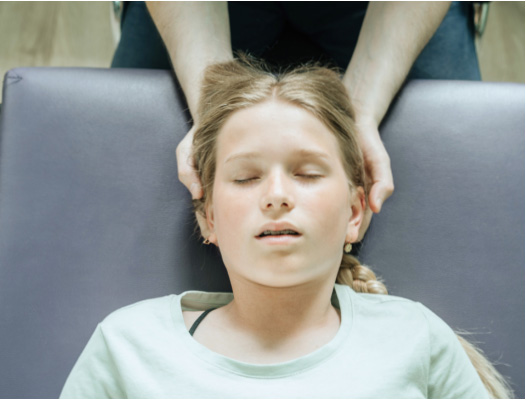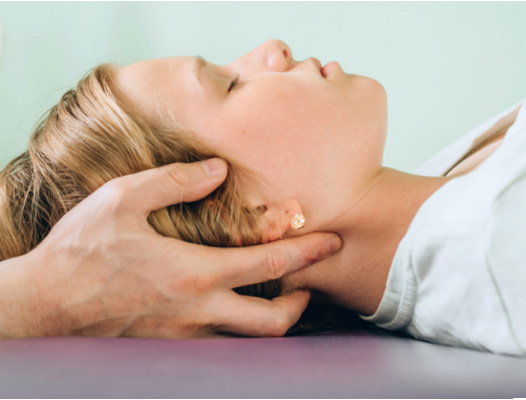
Exploring Craniosacral Therapy
Dear Readers,
In this edition of our Fall Newsletter, we dive into the world of physical therapy and the intriguing field of craniosacral therapy. We’ll explore what craniosacral therapy is, how it works, its development, and its potential application for teenagers, especially those with attention disorders.
What is Craniosacral Therapy?
Craniosacral therapy, often referred to as CST, is a noninvasive, hands-on approach to healthcare that focuses on the craniosacral system, which includes the brain and spinal cord. This system plays a vital role in the central nervous system’s function, influencing various bodily functions such as sensory perception, motor control, and overall health.


What to Expect during a Craniosacral Therapy Session?
During a craniosacral therapy session, a trained physical therapist uses gentle, manual techniques to evaluate and enhance the craniosacral system’s functioning. She works with the patient’s body, identifying restrictions, and facilitating the release of tension or blockages. This aims to improve the flow of cerebrospinal fluid and support the body’s self-healing mechanisms.

How Many Craniosacral Therapy Sessions Should I get?
The number of sessions required can vary from person to person. It depends on your specific health goals and the nature of the issues you are addressing. Some people may experience benefits after just a few sessions, while others may require ongoing treatment for chronic conditions.

Teenagers and
Craniosacral Therapy
Craniosacral therapy can be considered for teenagers, especially those with attention disorders. While more research is needed in this area, some parents and teenagers have reported improvements in focus, relaxation, and overall well-being after receiving craniosacral therapy.
Who Discovered
Craniosacral Therapy?
Craniosacral therapy was developed by Dr. John E. Upledger, an osteopathic physician, in the 1970s. Since then, it has gained recognition and popularity within complementary and alternative medicine practices.

Benefits of
Craniosacral Therapy
Craniosacral therapy enthusiasts claim a range of potential benefits, including:
- 1. Pain Management: It may help with the management of various pain conditions, including headaches and musculoskeletal pain.
- 2. Stress Reduction: Many people report feeling deeply relaxed after a session, which can help reduce stress and promote overall wellbeing.
- 3. Improved Function: CST is believed to enhance the body’s ability to heal and function optimally.
- 4. Emotional Release: Some individuals experience emotional releases during sessions, which can be therapeutic

Tip of the month
Why Mindful Beathing
Benefits Mind and Body
Mindfulness Breathing is the ability to slow down the breathing pattern, and to be aware of any physical and emotional changes that occur during the breathing, without judgment. Studies have shown that individuals who practice daily mindfulness meditation have been associated with lower rating of depression, and anxiety.

